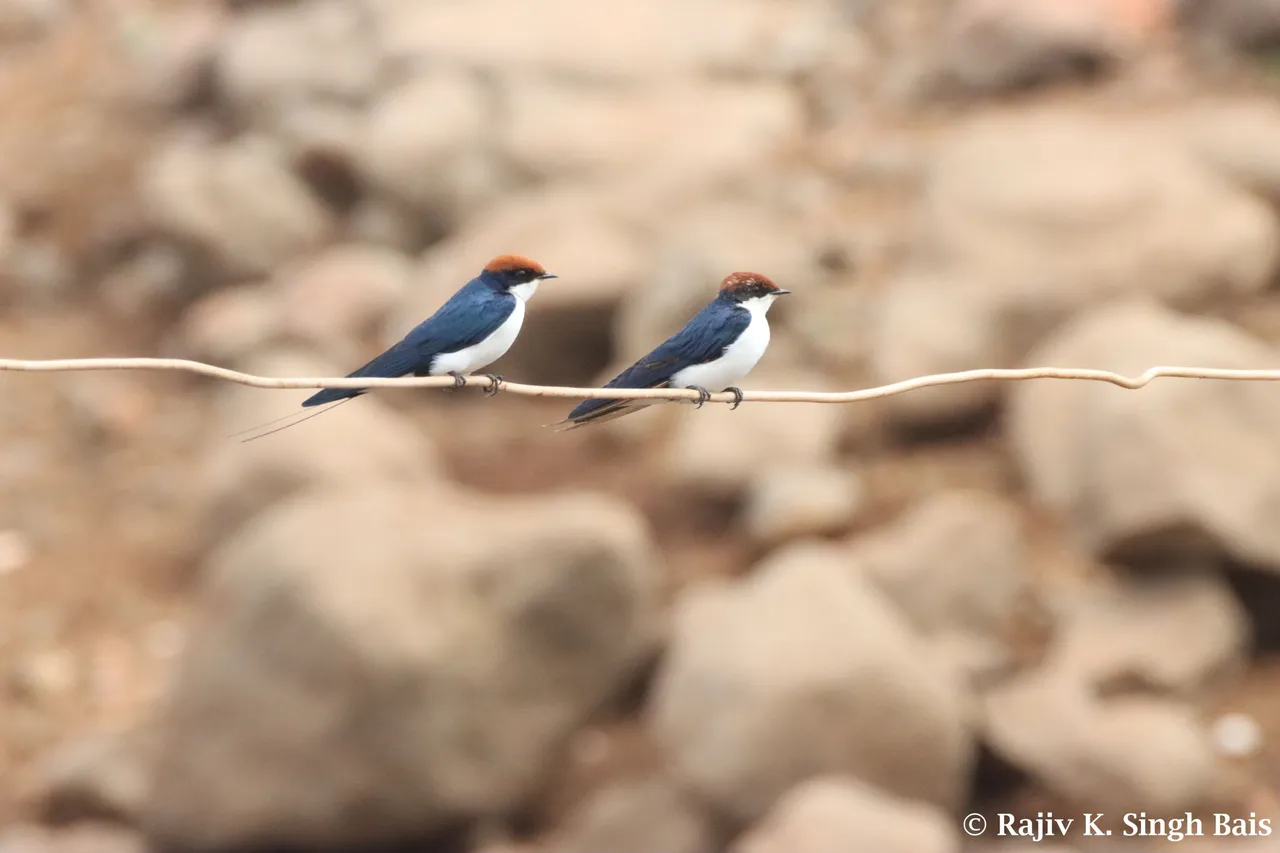
N
oida is a modern city situated on the left bank of river Yamuna in India. On the other side of the river is the city of New Delhi, capital of India. Two very expensive and beautiful bridges over Yamuna - one built next to Okhla barrage and the other near Maharani Bag, called DND Flyway (Delhi-Noida-Delhi Flyway) - connect Delhi to Noida.
| Location of Delhi in India | Location of Noida |
|---|---|
 | 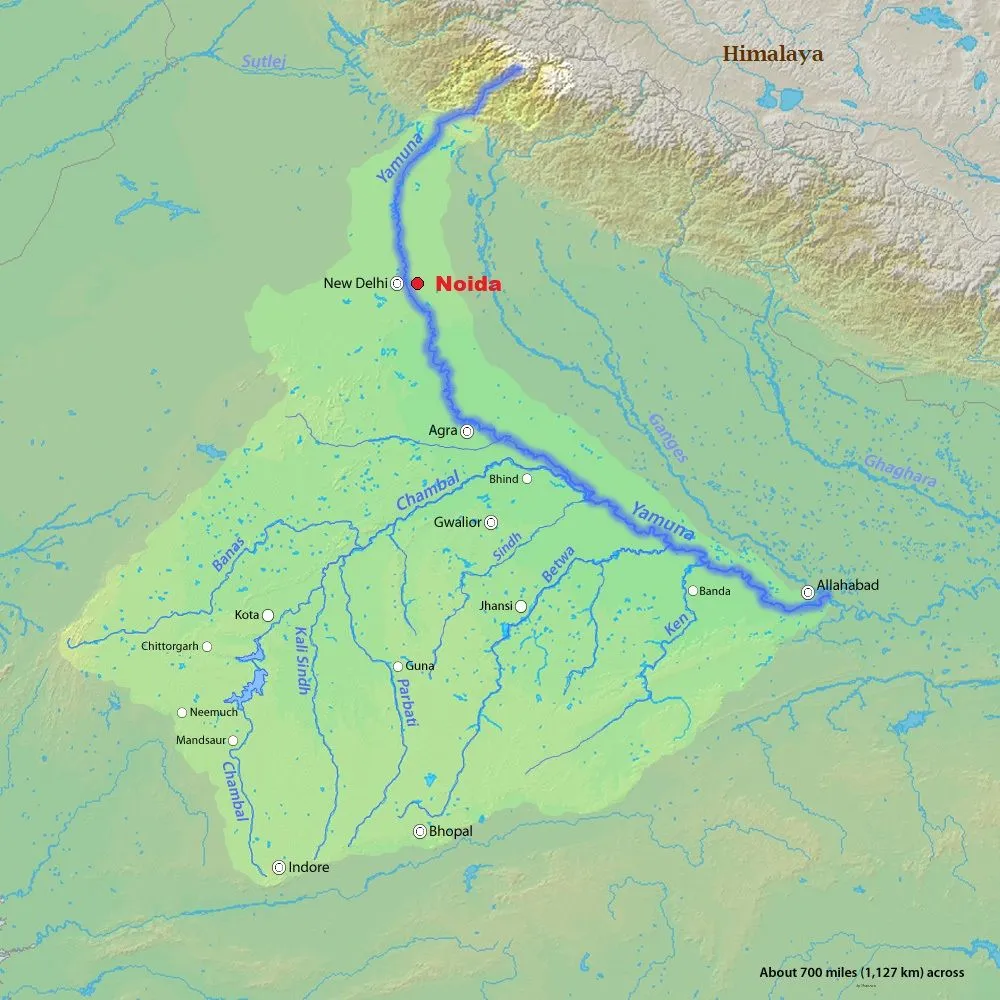 |
One small tributary of Yamuna, collecting rain from many parts of east Delhi and Noida runs very close to our home in Noida. But for the most part of the year, except during the monsoon season, this tiny rivulet only transports sewage to river Yamuna now. It must have been a meandering little tributary of Yamuna before Noida town was planned and developed in 1970s when this natural stream was transformed into a linear open canal with few sudden and unnatural ninety-degree bends and “reclaimed” land used for building roads and residential colonies.
People here at Noida do not even think of this linear water body as a river. For most of them, it is only a dirty drain that needs to be invisibilised as soon as possible by completely converting it to a concrete drain covered with concrete slabs on the top.
Despite neglect and ill treatment of this rivulet, it still attracted birds which surprisingly included a pair of delicate Wire-tailed Swallow. Other birds that visited this stream were of tougher kind like Pariah Kite, White-breasted Kingfisher, Red-wattled Lapwing, House Crow, Pond Heron, Common Myna, Blue Rock Pigeon, Alexandrine Parakeets and Black-winged Stilts.
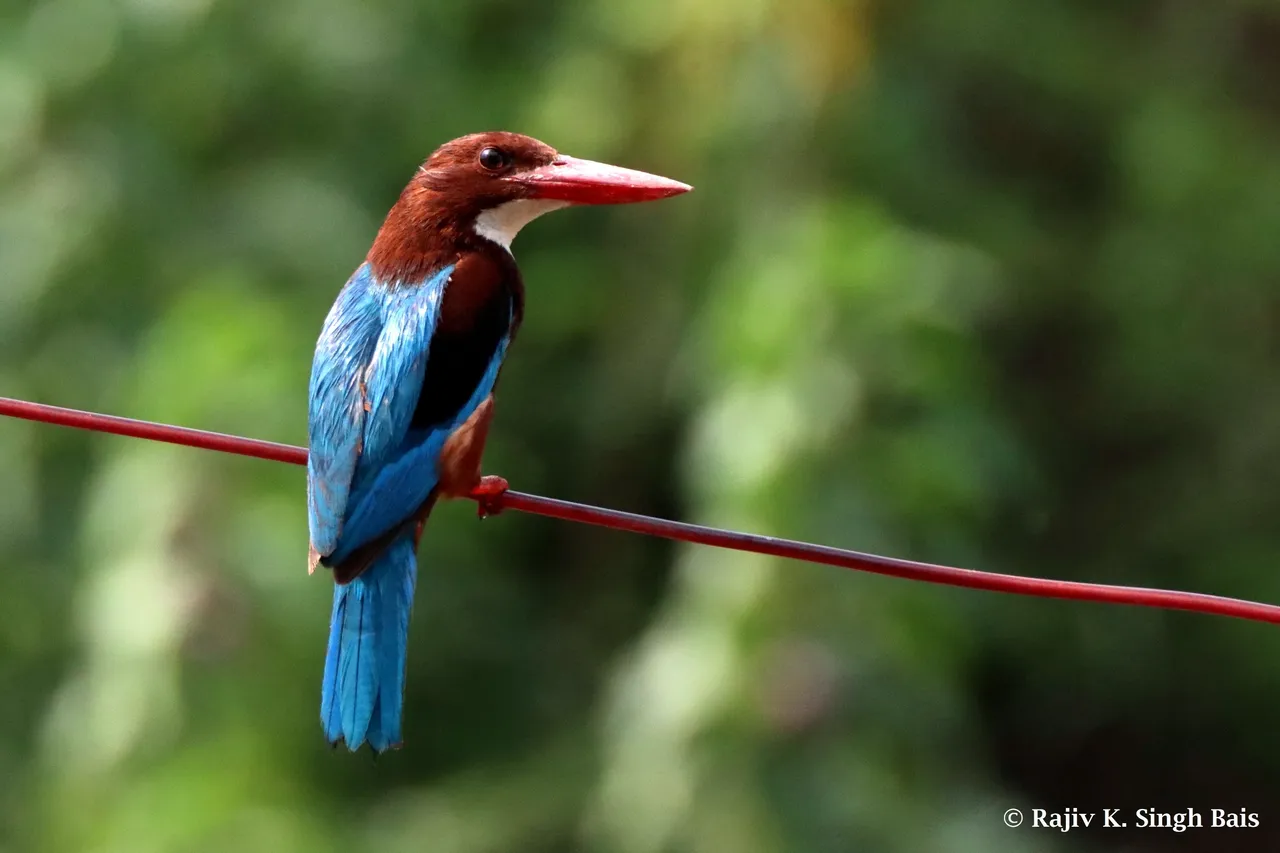

This stream is witness to enormous changes in the catchment in the last 25 years. A WBM (Water Bound Macadam) road was first converted to a bitumen road and subsequently widened to a four-lane road. Twenty-meter-wide green belts on both the sides of the road were converted to concrete footpaths and parking lots. And when even this appeared to be inadequate to handle ever-increasing vehicular traffic, an elevated concrete road in the form of a 3.5 km long elevated expressway was constructed over the existing road.
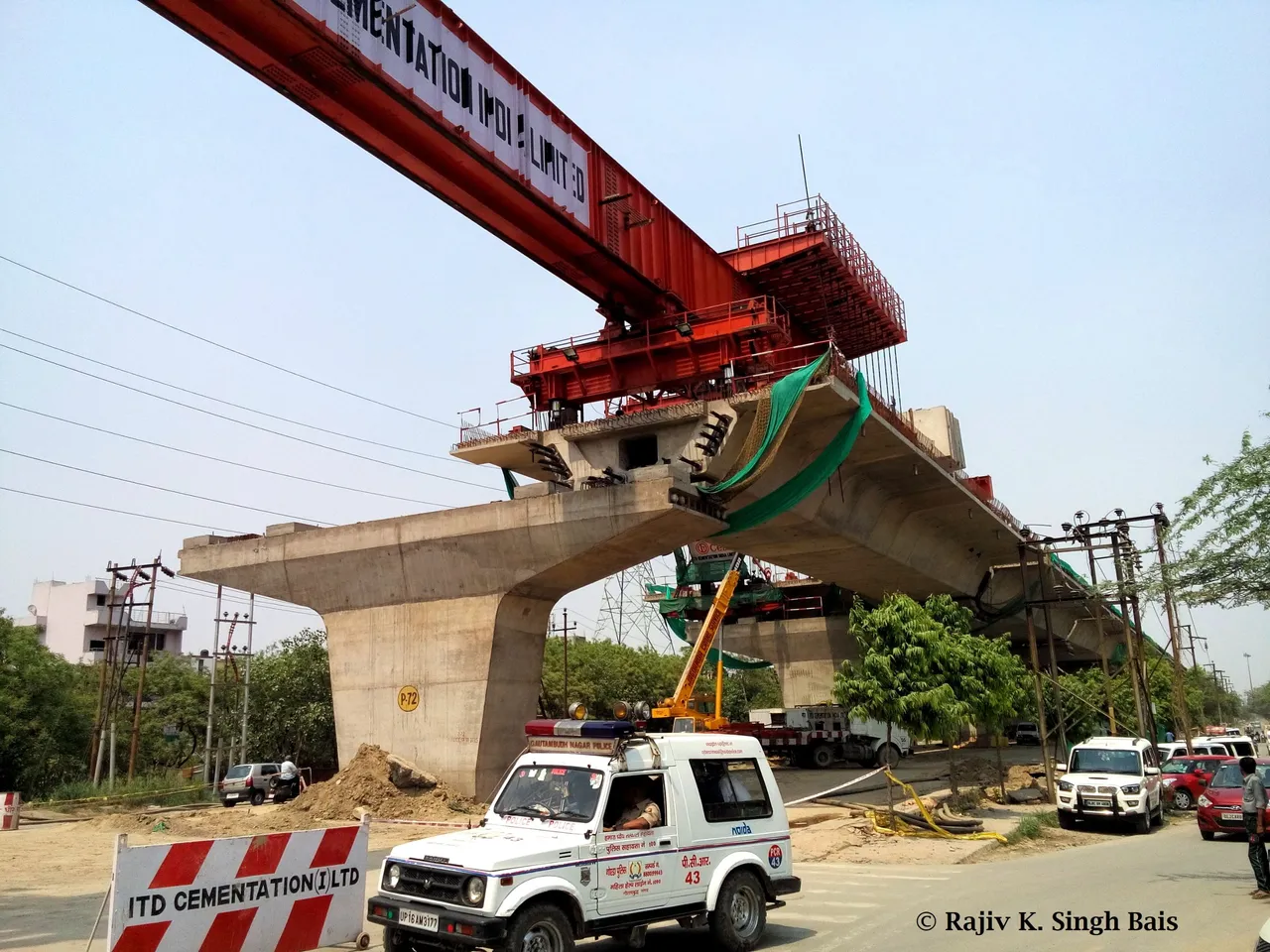
Remaining undeveloped patches of land were handed over to private businesses for building multi-storied offices and glittering malls. Metro rail arrived from Delhi crossing the Yamuna and its Noida tributary at multiple locations. Existing parks around the stream shrunk slowly to provide for recreational facilities. A government nursery got reduced to half its original size, making room to accommodate a parking lot for a multi-storied cultural centre called Shilp Haat. Yet another park got converted to a big parking lot with concrete paving. All remaining unpaved areas got slowly covered with concrete over a period of time.
Summer temperatures began to rise. Ground nesting birds like Small green bee-eaters were first to disappear. There were no natural earth-mounds or embankments where they could dig their nest tunnels.

House sparrows became rare and gradually disappeared. And finally wire-tailed swallows abandoned the area. This was also the time when rich people of the area were busy expanding their houses by adding additional floors and buying second and third cars. To create more parking spaces, small gardens in front of these expanded houses were converted to concrete parking slots.
Excessive use of concrete, especially in the form of pavements and parking lots destroyed biodiversity in a variety of ways. Highly concretized area now soaks up heat of the sunshine and AC exhausts during the day and very slowly releases it back into the atmosphere during night, creating a Heat Island. Natural habitats are choked, top-soil destroyed and nesting grounds of many birds and other insects are permanently lost.
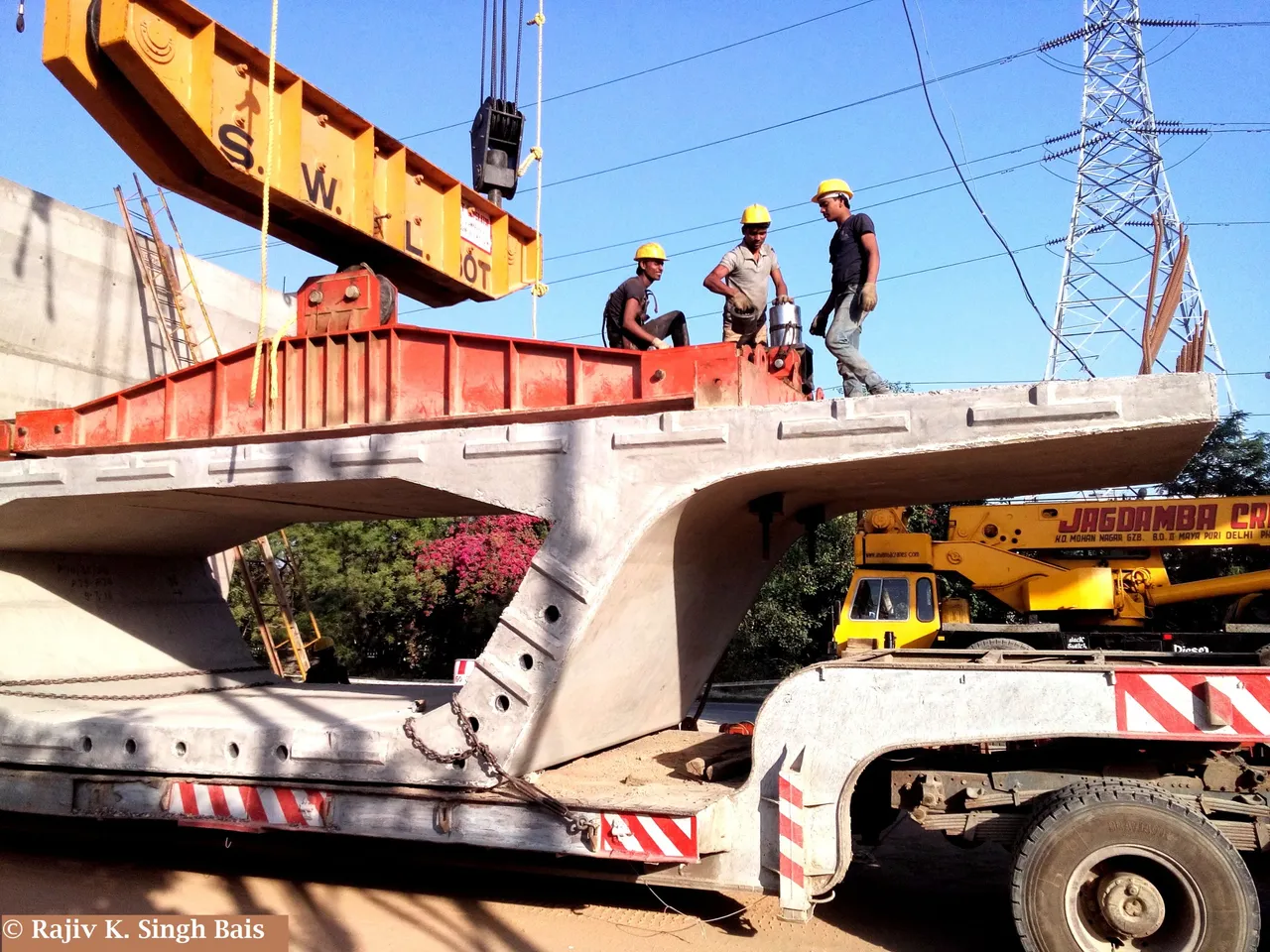
Wire-tailed swallow is a resident bird in Delhi and Noida and it used to be a very common sight on the electric lines crossing the stream next to a culvert under the road. They were often seen catching insects along the stream and flying low under the culvert. I am sure they built their nests under the culvert close to the flowing water.
As per Salim Ali’s “The book of Indian Birds”, Wire-tailed swallow bird is a glossy steel-blue coloured bird from above with a chestnut cap distinguished from other swallows by its glistening white underparts and two long “wires” in the tail. Its habits are similar to other species of swallows, but it is more confined to the neighbourhood of water. Seldom encountered away from streams, tanks, reservoirs etc. As per “Handbook of the Birds of India and Pakistan”, Volume 5 by Salim Ali and S. Dillon Ripley, the food of this bird is small flying insects, mainly midges, gnats and other Diptera; winged ants and termites. Its nest is an oval mud saucer lined with grass and feathers.

So, it is clear that this small tributary of river Yamuna passing through Noida was counted as a rivulet (though quite dirty and polluted even then) by this bird till only a few years ago, but no more now. A home for this bird has permanently vanished. Either the rivulet no longer supports the insect life required to sustain a pair of wire-tailed swallow or the air has become so polluted that all the tiny insect life has disappeared.
Living in the middle of such a concrete jungle like this with no access to nature for miles together makes it very difficult to maintain sanity.
Rajiv K. Singh Bais
Zoological names of the birds mentioned in this piece:
- Wire-tailed Swallow (Hirundo smithii filifera)
- Pariah Kite (Milvus migrans)
- White-breasted Kingfisher (Halcyon smyrnensis)
- Red-wattled Lapwing (Vanellus indicus)
- House Crow (Corvus splendens)
- Pond Heron (Ardeola grayii)
- Common Myna (Acridotheres tristis)
- Blue Rock Pigeon (Columba livia)
- Alexandrine Parakeet (Psittacula eupatria)
- Black-winged Stilt (Himantopus himantopus)
- Small Green Bee-Eater (Merops Orientalis)
References
- Image depicting the location of Delhi in India : WikipediaLink | CC by SA 4.0
- Image depicting the catchment area of the river Yamuna : Wikipedia Link | CC by SA 4.0
- “The book of Indian Birds” by Salim Ali, Oxford University Press, 1988
- “Handbook of the Birds of India and Pakistan”, Volume 5 by Salim Ali and S. Dillon Ripley, Oxford University Press, 1986
Copyright Disclaimer
All images and media used in this article are my own work unless specified otherwise.